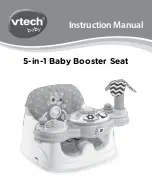
AC Battery Installation
© 2016 Enphase Energy Inc.
141-00036 Rev 01
5
DANGER
: Risk of
fire or explosion.
Only qualified personnel, using personal protective equipment (PPE) should transport or handle the
AC Battery.
Do not dispose of AC Battery(ies) in a fire or by burning. The AC Battery(ies) can explode.
DANGER
: Risk
of fire.
During use, storage, or transport, keep the AC Battery in an area that is well ventilated and protected
from the elements, where ambient temperature is between -4° F (-20° C) and 113° F (45° C), and
where relative humidity is between 5 and 95 percent. Do not install AC Battery at elevations over
6,000 feet (1,829 m) above sea level.
If the AC Battery generates smoke, remove AC power from the Enphase System so that
charging/discharging stops.
Do not allow or place flammable, sparking, or explosive items near the AC Battery.
DANGER
: Risk
of electric
shock.
Do not use Enphase equipment in a manner not specified by the manufacturer. Doing so may cause
death or injury to persons, or damage to equipment.
Risk of electric shock. Be aware that installation of this equipment includes risk of electric shock. Do
not install the AC Battery without first removing AC power from the photovoltaic system. Disconnect
the power coming from the photovoltaics before servicing or installing.
In areas where flooding is possible, install the AC Battery at a height that prevents water ingress.
Always de-energize the AC branch circuit during an emergency and/or before servicing the AC
Battery. Never disconnect the DC connectors under load.
A battery can also present risk of high short-circuit current. Observe the following precautions when
working on batteries:
Remove watches, rings, or other metal objects.
Use tools with insulated handles.
Wear rubber gloves and boots.
Do not lay tools or metal parts on top of batteries.
Risk of electric shock. Risk of fire. Do not work alone. Someone should be in the range of your voice
or close enough to come to your aid when you work with or near electrical equipment.
WARNINGS:
Risk of property
or equipment
damage
During use, storage, transport, and installation, always keep the AC Battery in an upright position.
You must install the AC Battery only on a suitable wall using an Enphase wall-mount bracket.
Before installing or using the AC Battery, read all instructions and cautionary markings in the
technical description and on the equipment.
Do not install or use the AC Battery if it has been damaged in any way.
Do not exceed the maximum number (14) of AC Batteries in a 20A AC branch circuit.
Do not sit on, step on, place objects on, or insert objects into the AC Battery.
The AC Battery is not waterproof. Do not place beverages or liquid containers on top of the AC
Battery. Do not expose the AC Battery to liquids or flooding.
Damage to the battery can occur from over-discharge. While in storage, the AC Battery will discharge.
If the battery state of charge falls to 0%, the AC Battery can be damaged or destroyed. Because of
this, the AC Battery must only be stored for a limited amount of time.
The battery must be installed and energized by the “Must Energize By” date on the shipping box
label.
The battery must have a charge state of at least 30% when placed in storage.
If the AC Battery has already been installed, the battery must be placed into
Sleep Mode
prior to
uninstalling. An AC Battery in
Sleep Mode
can be stored a maximum of two months from the
date it was placed into
Sleep Mode
.
When placing the AC Battery in storage, ensure that the DC connector is unplugged.






































